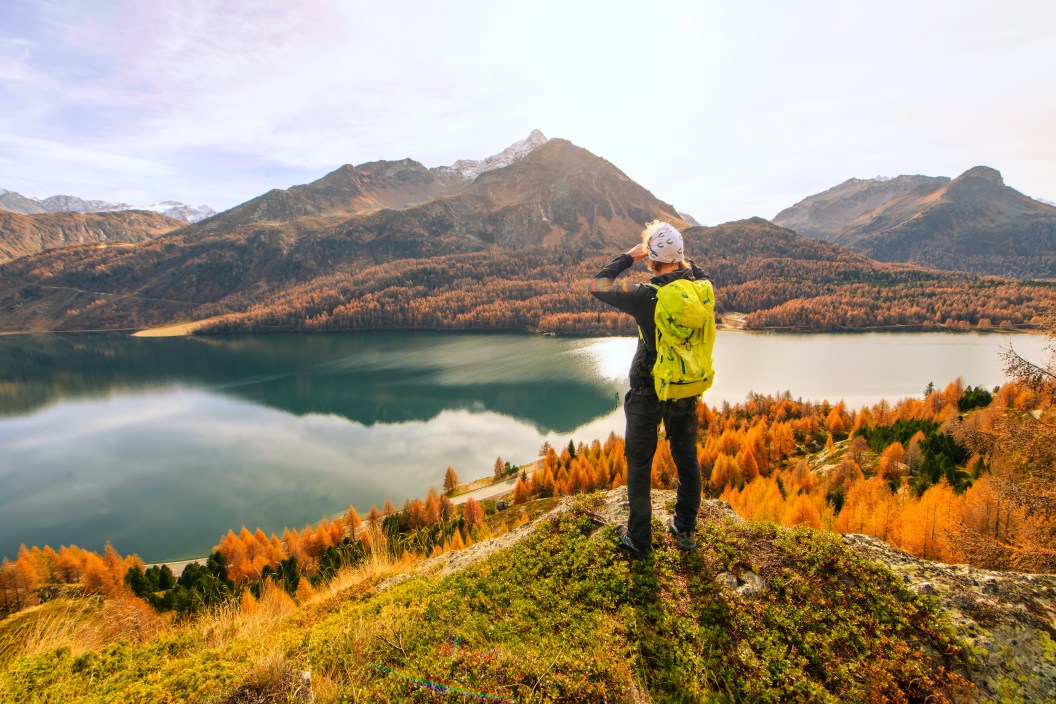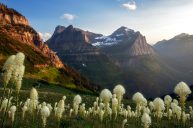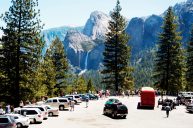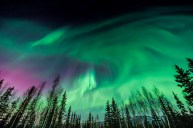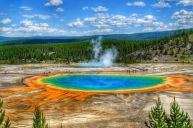When you envision the perfect fall getaway it likely involves a warm drink, vibrant orange and yellow foliage, and cozy clothes. What if I told you that Montana is the ideal place to experience the best that fall has to offer? Spanning 560 miles from east to west and encompassing over 147,000 square miles, the nation's fourth largest state has 55 state parks, two of the most well-known national parks, a charming capital city of Helena, and a whole lot of natural beauty everywhere you look.
Growing up in Utah, autumn meant yellowing aspens, but I've since swapped those for Montana's golden larch trees. Though summer in Montana is hard to beat, fall has grown to be my favorite time of year in this beautiful state I now call home. With smaller crowds, cooler temperatures, plenty of sunshine, and unique colors, fall in Montana has great energy and is a great time to explore.
1. Visit a National Park
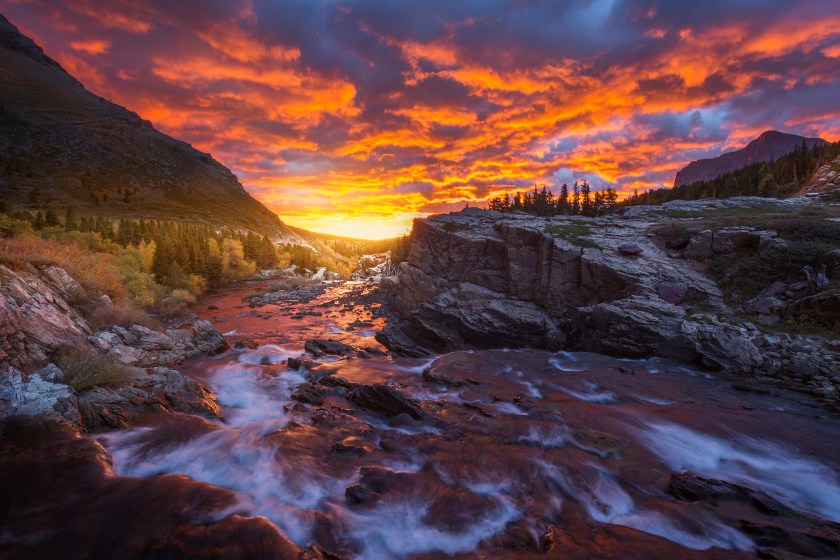
Getty Images, Jon Farmer
With both Glacier National Park and a portion of Yellowstone National Park within its borders, Montana attracts loads of tourists every summer. This all begins to change at the end of August though, as kids head back to school and peak summer comes to a close. That makes autumn the ideal time to gear up for a trip to Montana's national parks. Not only will the crowds be smaller, but the foliage colors will be vibrant, and the animals more lively.
Located on the northern border with Canada, Glacier welcomes fall to the park earlier than other parts of the state. Getting to the park by early October will ensure you see the colorful high country and will also offer you the chance to drive up stunning Going to The Sun Road before it closes for winter. This scenic road is one of the most spectacular attractions in the park, so be sure to get there before the snow flies.
With the lack of crowds and busy animals preparing for winter, September, and October are two of the best months to visit Yellowstone. Though bison are the most iconic animals of Yellowstone, the park is home to a wide variety of incredible wildlife. If you're lucky, you may see elk in rut, listen to the male's bugle, or even catch glimpses of grizzly bears loading up on food before hibernation. Remember: While Yellowstone can offer a front-row seat to a rich array of stunning wildlife, remember that they are wild animals, so keep your distance and stay alert.
2. Soak in Hot Springs
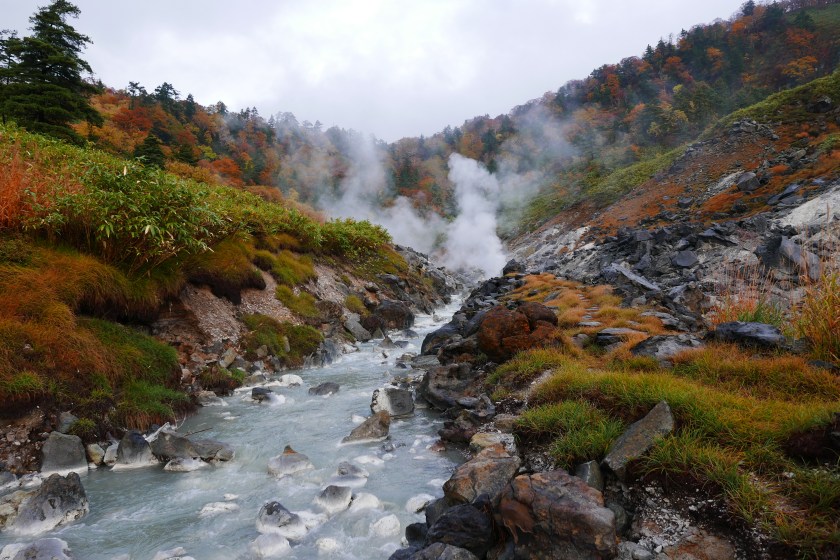
Getty Images, KKKvintage
There's nothing better than kicking back in a hot spring while enjoying the fall colors all around you. And the cooler temperatures mean it's hot spring season. Though peak tourist season has come to a close, the hot springs of Montana are always a favorite activity for locals—so this is your opportunity to indulge in this experience like one, without the crowds.
You can find both natural wilderness springs and more developed hot spring resorts, so there's something for everyone. Many of the more developed hot springs are set within beautiful properties and with lodging options to give you a full relaxing escape. Some of the more well-known hot spring resorts include Chico Hot Springs in Paradise Valley, Montana, outside of Yellowstone, Quinn Hot Springs about one hour northwest of Missoula, and Fairmont Hot Springs 20 miles west of Butte in Anaconda.
3. Land Huge Trout on the Fly

Getty Images, skibreck
Montana's fishing guides are busy all summer dealing with overcrowded rivers and crack-of-dawn call times to avoid sweltering temperatures. Fall is a welcome change for all anglers; the cooler temps mean more active fish and a later-in-the-day, more leisurely time on the water, and October especially brings some of the best fishing of the year.
Montana is known for its world-class fly fishing, from streamer fishing for the fish holding deep in the river to late-morning hatches that allow you to catch fish with a dry fly. Though you can catch large fish year-round, the fall can be the time of year to catch some of the largest. If you have your sights set on landing a 20-inch-plus trout, grab a guide and some streamers, and get on the river, and you might just see that dream come true!
4. Hike Through a Ghost Town
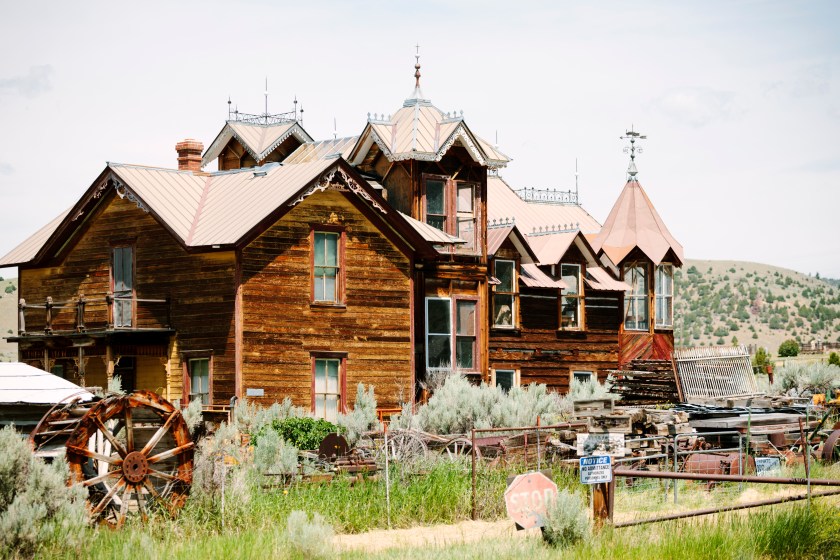
Getty Images, urbancow
The gold and silver booms of the 1860s brought settlers to Montana, who built up full towns near the mines where they lived—until the gold ran out and the settlements were deserted. What remains now are ghost towns that you can explore and experience what it was like to live there long ago. For added spookiness, visit one around Halloween and try to spot some real ghosts!
Many ghost towns are located in the mountains where the mining was rich, meaning that some aren't easily accessible past summer, especially if there's an early snowfall. However, a few gems are open year-round that you should add to your list.
Virginia City is one the most popular ghost towns in Montana, and for good reason. It's been extremely well preserved, and peak season brings historical performances and even a grand Victorian ball. That said, fall is more mellow, giving the town a more ghostly feel. Without constant attractions and bustling crowds, you can meander the streets and explore at your own pace, or hire a horse-drawn carriage ride that won't be mired in traffic.
The ghost town of Bannack is located about 25 miles southwest of Dillon, Montana, and has been turned into a beautiful state park. Bannack was a large boomtown and has been well preserved, allowing you access to many of the old buildings. It is truly ghostly and feels like walking back in time.
About 25 miles west of Helena you'll find Marysville, which was once Montana's leading gold producer. Marysville is still occupied today, though by only a small fraction of the once 4,000 residents. Visiting this not-quite ghost town is an amazing opportunity to explore many of the historic buildings and visit the businesses that remain.
5. View the Milky Way Over the Rocks
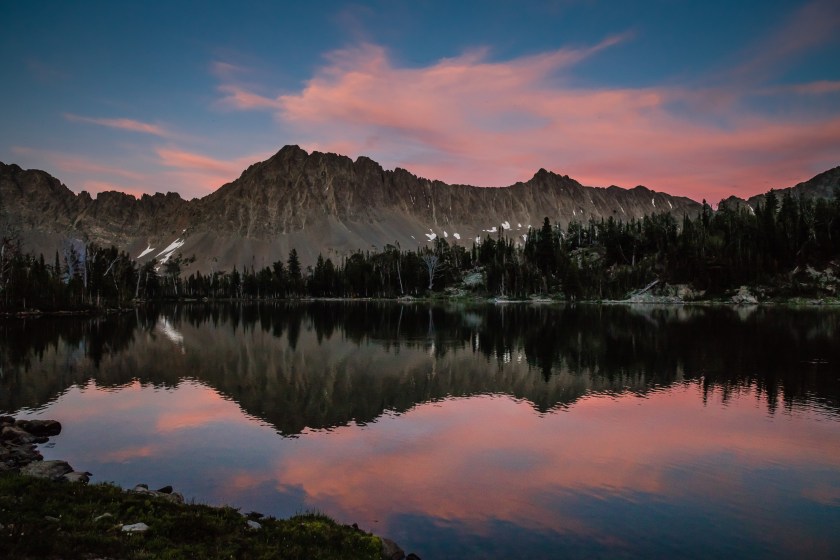
Getty Images, bmswanson
Eastern Montana is home to some of the darkest skies of the Big Sky State. The badlands landscape is full of amazing rock formations and beautiful views from its miles of trails, and once the sun sets, you can enjoy an amazing night of stargazing. Eastern Montana typically stays a bit warmer than the west in the fall, too, so you may not get too chilly, either.
Makoshika State Park is Montana's largest state park with events all year long. Once a month, its rangers hold a full moon guided hike, so you can experience the park in a whole new way. The landscape where Makoshika is today was also a hotbed for dinosaurs—to date, 10 different species have been found in the area. Be sure to stop by the visitor center before nightfall to see some amazing fossils.
In Short: Plan Your Autumn Trip to Montana Now!
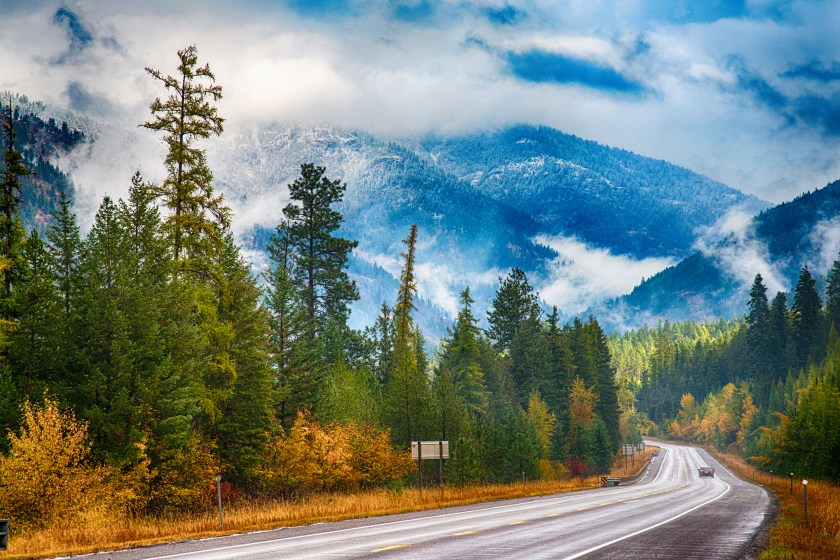
Getty Images, Art Wager
While most of the crowds have fled south from the cooler temperatures, you now know why fall is the best time for a visit to Montana. With endless hiking trails, huge trout, and history to explore, Montana is the perfect place to get in one last outdoor adventure before the snow flies. Be sure to pack your warm clothes, adventure shoes, and camera for a fall you won't forget.
READ MORE: 7 Tips to Make Your Fall Leaf-Peeping Adventures Less Frustrating
